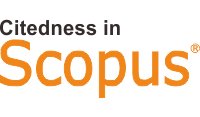Leveraging Social Media Data for Sustainable Tourism Development: Spatial Analysis of Tourist Destinations
DOI:
https://doi.org/10.35313/jtospolban.v4i3.132Keywords:
GIS, Social media, New Normal, Spatial Analysis, TourismAbstract
The COVID-19 pandemic significantly disrupted the tourism industry by restricting social activities and raising concerns about overcrowding at popular destinations. To address these challenges, effective strategies are needed to manage visitor distribution. This study analyzes social media data from a travel platform, including reviews and ratings, to assess the distribution and popularity of tourist destinations in West Java. The research explores the potential of social media as a resource for local tourism planning and development, aiming to enhance West Java's rich offerings in arts, culture, culinary experiences, and adventure tourism. Findings reveal visitor patterns, with a concentration of tourists in urban areas compared to districts, and highlight the popularity of natural attractions in Bogor, Sukabumi, Bandung, Garut, and Pangandaran. Additionally, Cirebon emerges as a key hub for cultural tourism and transit. By leveraging reviews and spatial data, this study underscores the role of social media in supporting sustainable tourism strategies. Tools like ArcGIS are recommended to visualize tourist patterns, promote ecotourism, and achieve West Java's green tourism goals in the post-pandemic era.
References
Afnarius, S., Akbar, F., & Yuliani, F. (2020). Developing Web-Based and Mobile-Based GIS for Places of Worship Information to Support Halal Tourism: A Case Study in Bukittinggi, Indonesia. ISPRS International Journal of Geo-Information, 9(1), 52. https://doi.org/10.3390/ijgi9010052
Albuquerque, H., Costa, C., & Martins, F. (2018). The use of Geographical Information Systems for Tourism Marketing purposes in Aveiro region (Portugal). Tourism Management Perspectives, 26, 172–178. https://doi.org/10.1016/j.tmp.2017.10.009
Alonso-Almeida, Borrajo-Millán, & Yi. (2019). Are Social Media Data Pushing Overtourism? The Case of Barcelona and Chinese Tourists. Sustainability, 11(12), 3356. https://doi.org/10.3390/su11123356
Andzulis, J. “Mick,” Panagopoulos, N. G., & Rapp, A. (2012). A Review of Social Media and Implications for the Sales Process. Journal of Personal Selling & Sales Management, 32(3), 305–316. https://doi.org/10.2753/PSS0885-3134320302
Brynjolfsson, E., & Collis, A. (2019). How Should We Measure the Digital Economy?
Bumi, L. (2018, August 13). Overview of UTM Coordinate And The Calculations . https://lintasbumi.com/2018/08/13/overview-of-utm-coordinate-and-the-calculations/
Chen, T., Drennan, J., Andrews, L., & Hollebeek, L. D. (2018). User experience sharing: Understanding customer initiation of value co-creation in online communities. European Journal of Marketing, 52(5–6), 1154–1184. https://doi.org/10.1108/EJM-05-2016-0298
Chen, T., & Wang, Y. C. (2021). A calibrated piecewise-linear FGM approach for travel destination recommendation during the COVID-19 pandemic. Applied Soft Computing, 109. https://doi.org/10.1016/j.asoc.2021.107535
Chong, A. Y. L., Khong, K. W., Ma, T., McCabe, S., & Wang, Y. (2018). Analyzing key influences of tourists’ acceptance of online reviews in travel decisions. Internet Research, 28(3), 564–586. https://doi.org/10.1108/IntR-05-2017-0212
Febriani, N. S., & Dewi, W. W. A. (2019). Perilaku konsumen di era digital: Beserta studi kasus. Universitas Brawijaya Press.
Firliana, R., Kasih, P., & Suprapto, A. (2016). Pemanfaatan GIS Untuk Sistem Informasi Pariwisata. Nusantara of Enginering, 3(1).
Ghermandi, A., Camacho-Valdez, V., & Trejo-Espinosa, H. (2020). Social media-based analysis of cultural ecosystem services and heritage tourism in a coastal region of Mexico. Tourism Management, 77, 104002. https://doi.org/10.1016/j.tourman.2019.104002
Hysa, B., Karasek, A., & Zdonek, I. (2021). Social Media Usage by Different Generations as a Tool for Sustainable Tourism Marketing in Society 5.0 Idea. Sustainability, 13(3), 1018. https://doi.org/10.3390/su13031018
IN Press Center | About TripAdvisor. (2019, November). https://tripadvisor.mediaroom.com/IN-about-us
İştin, A. E. (2020). Social Media Transforming Tourist Behavior. In The Emerald Handbook of ICT in Tourism and Hospitality (pp. 113–128). Emerald Publishing Limited. https://doi.org/10.1108/978-1-83982-688-720201008
Jovanovic, V., & Njegus, A. (2008). The application of GIS and its components in tourism. Yugoslav Journal of Operations Research, 18(2), 261–272. https://doi.org/10.2298/YJOR0802261J
Kristiana, Y., Pramono, R., & Brian, R. (2021). Adaptation Strategy of Tourism Industry Stakeholders During the COVID-19 Pandemic: A Case Study in Indonesia. Journal of Asian Finance, Economics and Business, 8(4), 0213–0223. https://doi.org/10.13106/jafeb.2021.vol8.no4.0213
Lin, Y., & Geertman, S. (2019). Can Social Media Play a Role in Urban Planning? A Literature Review (pp. 69–84). https://doi.org/10.1007/978-3-030-19424-6_5
Luo, T., Freeman, C., & Stefaniak, J. (2020). “Like, comment, and share”—professional development through social media in higher education: A systematic review. Educational Technology Research and Development, 68(4), 1659–1683. https://doi.org/10.1007/s11423-020-09790-5
Mariyono, J. (2017). Determinants of Demand for Foreign Tourism in Indonesia. Jurnal Ekonomi Pembangunan: Kajian Masalah Ekonomi Dan Pembangunan, 18(1), 82. https://doi.org/10.23917/jep.v18i1.2042
Minkwitz, A. (2018). Tripadvisor as a source of data in the planning process of tourism development on a local scale. Tourism(Poland), 28(2), 49–55. https://doi.org/10.2478/tour-2018-0014
Movahed, A., & Gahlehteimouri, K. J. (2019). THE IMPORTANCE OF THE CONCEPT AND MEANING OF PLACE IN TOURISM GEOGRAPHY. Journal of Tourism, Hospitality and Environment Management, 4(16), 01–09. https://doi.org/10.35631/jthem.416001
Muriuki, C. M., & Kenduiywo, B. (2021). A Multimedia Web GIS Portal for Promotion of Tourism in Kenya. Journal of Geographic Information System, 13(01), 19–35. https://doi.org/10.4236/jgis.2021.131002
Nummi, P. (2019). Social Media Data Analysis in Urban E-Planning. In Smart Cities and Smart Spaces (pp. 636–651). IGI Global. https://doi.org/10.4018/978-1-5225-7030-1.ch028
Nurhayati, H. (2021, May). Internet usage in Indonesia - statistics & facts | Statista. https://www.statista.com/topics/2431/internet-usage-in-indonesia/
Pembagian Zona UTM Indonesia Berdasarkan Titik Koordinatnya. (2022, December 19). https://kumparan.com/berita-hari-ini/pembagian-zona-utm-indonesia-berdasarkan-titik-koordinatnya-1zRuTtVzZiJ/1
Phillips, P., & Moutinho, L. (2014). Critical review of strategic planning research in hospitality and tourism. Annals of Tourism Research, 48, 96–120. https://doi.org/10.1016/j.annals.2014.05.013
Purba, J. horas V., Fathiah, R., & Steven, S. (2021). The Impact of COVID-19 Pandemic on The Tourism Sector in Indonesia. In Riset : Jurnal Aplikasi Ekonomi, Akuntansi dan Bisnis (Vol. 3, Issue 1).
Santos, M. L. B. dos. (2022). The “so-called” UGC: an updated definition of user-generated content in the age of social media. Online Information Review, 46(1), 95–113. https://doi.org/10.1108/OIR-06-2020-0258
Schmunk, S., Höpken, W., Fuchs, M., & Lexhagen, M. (2013). Sentiment Analysis: Extracting Decision-Relevant Knowledge from UGC. In Information and Communication Technologies in Tourism 2014 (pp. 253–265). Springer International Publishing. https://doi.org/10.1007/978-3-319-03973-2_19
Sipahutar, T. T. U. (2019). The Influence of Tourism Sector and Trande on Economic Growth in Indonesia. Quantitative Economics Journal, 8(2), 37. https://doi.org/10.24114/qej.v8i2.23614
Soehardi, S., & Untari, D. (2020). The Effect Of Covid-19 Pandemic On Hotel Employees, Hotel Occopancy Rates And Hotel Tax Income In Jakarta, Indonesia. In Systematic Reviews in Pharmacy (Vol. 11, Issue 12).
Sotiriadis, M. D. (2017). Sharing tourism experiences in social media. International Journal of Contemporary Hospitality Management, 29(1), 179–225. https://doi.org/10.1108/IJCHM-05-2016-0300
Trihayuningtyas, E., Wulandari, W., Adriani, Y., & Sarasvati, S. (2019). MEDIA SOSIAL SEBAGAI SARANA INFORMASI DAN PROMOSI PARIWISATA BAGI GENERASI Z DI KABUPATEN GARUT. Tourism Scientific Journal, 4(1), 1. https://doi.org/10.32659/tsj.v4i1.46
Utami, B. A., & Kafabih, A. (2021). SEKTOR PARIWISATA INDONESIA DI TENGAH PANDEMI COVID 19. Jurnal Dinamika Ekonomi Pembangunan, 4(1), 383–389. https://doi.org/10.33005/jdep.v4i1.198
Vecchio, P. Del, Mele, G., Ndou, V., & Secundo, G. (2018). Creating value from Social Big Data: Implications for Smart Tourism Destinations. Information Processing & Management, 54(5), 847–860. https://doi.org/10.1016/j.ipm.2017.10.006
Volo, S. (2010). Bloggers’ reported tourist experiences: Their utility as a tourism data source and their effect on prospective tourists. Journal of Vacation Marketing, 16(4), 297–311. https://doi.org/10.1177/1356766710380884
Vu, H. Q., Li, G., Law, R., & Zhang, Y. (2018). Tourist Activity Analysis by Leveraging Mobile Social Media Data. Journal of Travel Research, 57(7), 883–898. https://doi.org/10.1177/0047287517722232
Warsudi, A. (2018). Potensi Wisata Petualangan di Jabar Paling Besar di Indonesia. https://daerah.sindonews.com/artikel/jabar/1170/potensi-wisata-petualangan-di-jabar-paling-besar-di-indonesia
Xue, L., & Zhang, Y. (2020). The effect of distance on tourist behavior: A study based on social media data. Annals of Tourism Research, 82, 102916. https://doi.org/10.1016/j.annals.2020.102916
Zarezadeh, Z. Z., Rastegar, H. R., & Gretzel, U. (2018). Reviewing the Past to Inform the Future: A Literature Review of Social Media in Tourism. Czech Journal of Tourism, 7(2), 115–131. https://doi.org/10.1515/cjot-2018-0006
Zeng, B., & Gerritsen, R. (2014). What do we know about social media in tourism? A review. Tourism Management Perspectives, 10, 27–36. https://doi.org/10.1016/j.tmp.2014.01.001
Downloads
Published
Issue
Section
License
Copyright (c) 2025 Tri Widarmanti, Gadang Ramantoko, Refi Rifaldi Windya Giri

This work is licensed under a Creative Commons Attribution-NonCommercial-ShareAlike 4.0 International License.



.png)

















